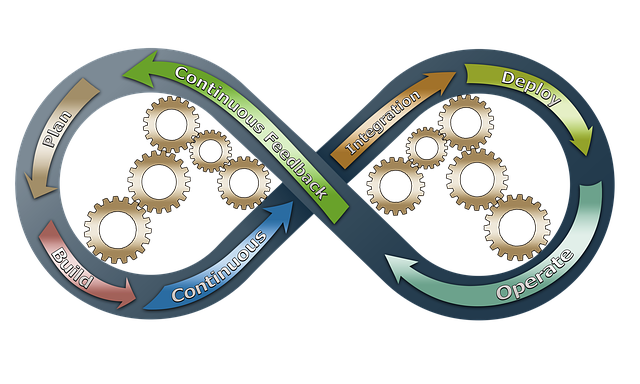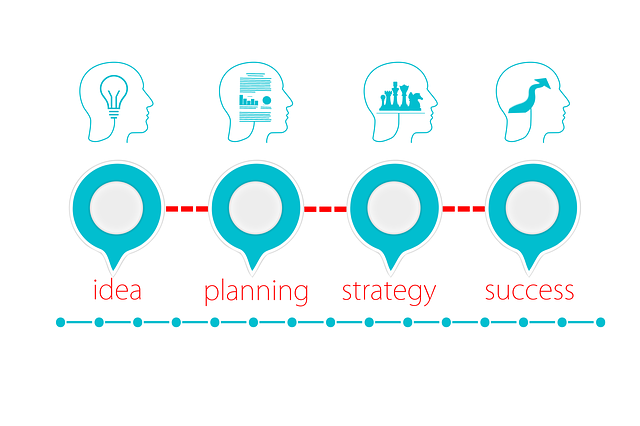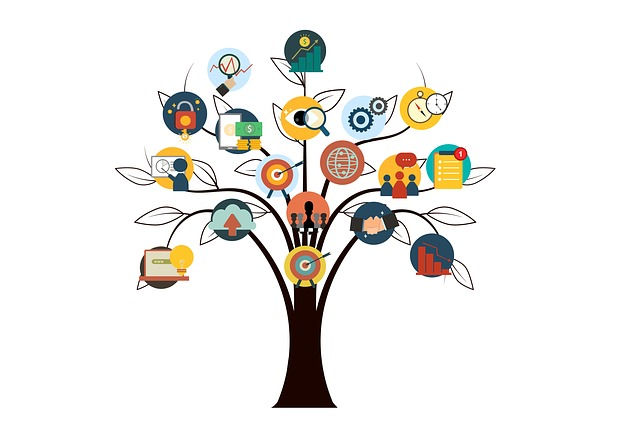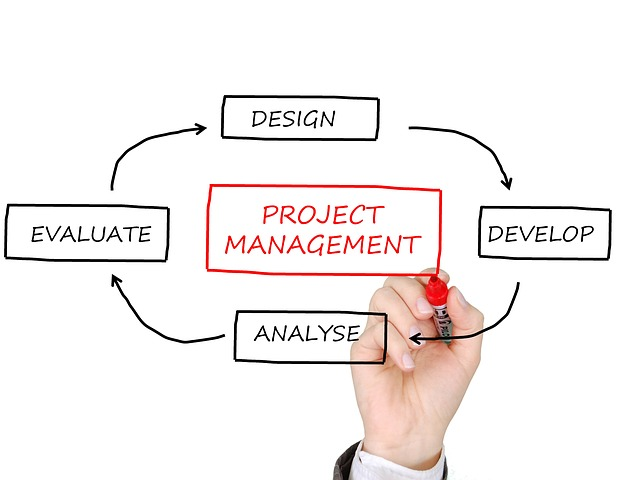
Introduction
Agile project management is an iterative and incremental approach to project management that emphasizes flexibility, collaboration, and customer involvement. The agile approach is based on the Agile Manifesto, which values individuals and interactions over processes and tools, working software over comprehensive documentation, customer collaboration over contract negotiation, and responding to change over following a plan.
The agile approach is often used in software development, but it can be applied to any type of project. In an agile project, the project requirements are divided into small, manageable pieces called user stories. These user stories are then prioritized, and the team works on the most important user stories first. The team then delivers working software at the end of each sprint, or iteration.
If you\'re thinking of using agile project management for your next project, here are a few things to keep in mind.
What Is Agile Project Management?

Agile project management is an iterative and incremental approach to managing software development projects. It emphasizes customer collaboration, continuous delivery of working software, and rapid feedback and adaptation to changing requirements.
The agile approach was originally developed in response to the shortcomings of the traditional waterfall model of software development, which is often criticized for being too rigid and inflexible. Agile project management has since become one of the most popular approaches to managing software development projects and is now used by organizations all over the world.
There are many different agile methodology frameworks, but all share the same core values and principles of customer collaboration, continuous delivery, and rapid feedback and adaptation. Whether you\'re using scrum, Kanban, or oneof the many other frameworks, your projects will be considered agile under the hood.
What Is Agile Project Management: Basic Principles of agile

The core principles of agile project management are customer collaboration, continuous delivery of working software, and rapid feedback and adaptation to changing requirements.
1. Customer Collaboration
The waterfall model of software development expects customers to fully specify what they want a product to do ahead of time, which they almost never are able to do. Instead, customers typically have a general idea of what they want and give developers a high-level specification, also known as a requirements specification.
2. requirement definition
A requirement is an objective that defines what needs to be built. A requirement definition describes the quality criteria that the result of delivering the requirement should meet and how the quality criterion will be measured. Requirement definitions are often specified in user stories, also known as functional requirements descriptions or user story definitions., which are short descriptions of what users want to see from the software being developed.
What Is the Agile Manifesto?

The Agile Manifesto is a set of principles for software development that emphasize individuals and interactions, customer collaboration and responding to change. Agile project management is a methodology that uses these principles to deliver projects in a more flexible and iterative way.
The Agile Manifesto was created in 2001 by a group of software developers who were frustrated with the traditional, waterfall approach to software development. They felt that this approach was too rigid and didn\'t allow for enough collaboration or flexibility.
The Agile Manifesto contains four key principles:
1. Individuals and interactions over processes and tools
2. Customer collaboration over contract negotiation
3. Responding to change over following a plan
4. Openness to refactor or abandon unfinished work
These principles influence the way Agile projects are managed. Roles, expectations, and guidelines differ depending on the scale of the project. Small teams may follow patterns established by the team. Larger projects may require a more formal structure. Regardless of the size of the project, leaders must balance
What Are the 12 Principles of Agile Project Management?

The 12 principles of agile project management are:
1. Customer satisfaction is the highest priority.
2. Deliver working software frequently, typically in two-week sprints.
3. Close collaboration between business stakeholders and developers.
4. Welcome changing requirements, even late in development.
5. Business stakeholders and developers must work together daily.
6. Continuous attention to technical excellence and good design.
7. Simplicity–the art of maximizing the amount of work not done–is essential.
8. The best architectures, requirements, and designs emerge from self-organizing teams.
9. Regularly reflect on how to become more effective and adjust accordingly.
10. Use the most appropriate tools–tools love developers more than users.
11. Collaborate daily with customers or users.
(Note: Some professionals prefer to call them users rather than customers, as customers are often not the people who will actually use the product or service being developed.)
12. Deliver fast, and deliver high quality. Do both at the same time.
Why Is It Important to Use These Principles?

The principles help ensure the project will be a success. Working together in a safe environment where everyone can contribute creates an atmosphere for creative ideas to emerge–and good ideas to take shape. A project manager can use the results to determine if the project is still a good idea, or if it should be altered or even abandoned.
As the industry has evolved, so have the best practices for managing projects. In the 1970s and 1980s, a traditional, macro-management approach worked well for many companies. The overall goals were relatively simple, and the knowledge required to complete the project was relatively static over the life of the project. However, that approach often faltered when it came to developing software and dealing with an ever-changing digital landscape.
That led to the development of agile methodologies in the 1990s, which were then refined and integrated into PMI\'s Project Management Body of Knowledge (PMBOK) in the early 2000s.
As projects got more complex, many developers and IT professionals realized that the upfront planning and lengthy roadmaps of the waterfall model were becoming less effective.
That\'s why many began to adopt the scrum method of development, which promised fewer scheduled updates and more flexibility for both the developers and the clients. As work progresses, scrum teams deliver a steady stream of completed modules, which guarantees stakeholders get to see the progress being made.
Project managers need to understand where their organizations are at with respect to project complexity, and how best to approach each project with the necessary resources and time. Not every project can or should be managed using an agile methodology, but it may be a good fit for your next project if:
1. The project is sufficiently complex and spans a long time horizon
2. There are multiple dependencies on other projects or teams
3. Users will interact with the product in multiple ways, requiring human factors engineering
4. The product will evolve over time as you learn more and get better insights
Understanding the Project’s Complexity
Complex projects are not necessarily bad projects, but they do require a different management approach. Consider the difference between managing the construction of a building and creating an innovative new product.
Construction of a building
In many ways, building construction is like an iterative project. You plan out the major components — foundation, walls, windows, roof, etc. — and then build those pieces one on top of the other, carefully checking along the way to ensure everything is lining up as it should. If something doesn’t seem right, you may put the whole construction project on hold while you figure out a new plan. In the end, however, you will have a finished building.
That’s an apt description of an Agile approach to project management. In Agile, you’re planning and executing in short cycles — sometimes as short as two weeks — with retrospective reflection on each cycle. Agile project management emphasizes communication, collaboration, and continuous improvement.
As with traditional project management, there’s some debate about the best approach to using Agile for your projects. However, the most widely accepted definition of Agile is the manifesto published by the Agile Alliance in 2001.
What Is Scrum?

Scrum is a framework for agile project management. It is characterized by short iterations, called sprints, and a focus on delivering value quickly. Scrum is often used in software development, but it can be applied to any type of project.
Scrum is based on the following principles:
1. Transparency: All members of the Scrum team should have a clear understanding of the project’s goals, progress, and challenges.
2. Inspection: Regularly inspecting the product and project progress allows the team to identify issues and adapt as needed.
3. Adaptation: The team should be prepared to change the way they are working at any time, in order to achieve the project goals.
4. Coordination: The team should work closely together, especially during project planning and review.
“The Scrum framework provides the best way of doing Agile project management,” according to Susanne Røden Bøgel, a certified Scrum master.
What Is Kanban?

Kanban is a system of project management that is commonly used in agile project management. It is a flexible system that allows for changes to be made to the project plan as needed. Kanban is based on the principle of continuous improvement and helps to ensure that projects are completed on time and within budget.
What Are the Benefits of Agile Project Management?

Agile project management is a process that helps organizations manage projects in a more flexible and adaptable way. This approach can be beneficial for organizations because it helps them respond to changes more quickly, manage risks more effectively, and improve communication and collaboration among team members. Additionally, agile project management can help organizations improve their overall project management processes and make them more efficient and effective.
What Are the Drawbacks of Agile Project Management?

Agile project management has many benefits, but there are also some drawbacks to consider. One potential drawback is that agile project management can be more difficult to scale than other methods. This is because agile relies heavily on face-to-face communication and collaboration, which can be more challenging to replicate on a larger scale.
Another potential drawback is that agile project management can be more unpredictable than other methods. This is because agile relies on short cycles and iterations, which can make it difficult to plan for the long term. Additionally, agile project management can be more chaotic and disruptive than other methods, which can be difficult for some team members to adjust to.
Advanced Agile Project Management Techniques

In order to truly master agile project management, you need to carefully weave it into your day-to-day activities. This means consistently holding daily standup meetings, creating consistent sprints of work, and being as communicative as possible with team members and stakeholders. While there is no true one correct way to implement agile project management, there are certainly ways to improve your practice if you’re already using this method.
Project management techniques are constantly evolving, and new techniques are always being created. Whether you prefer traditional project management or agile project management, it is a good idea to constantly learn new techniques to improve your projects. Agile project management is constantly evolving as well, and you can always find new advanced techniques to implement.
Establishing daily standup meetings, creating consistent sprints, and being communicative are key elements of agile project management.
How to Master Advanced Agile Project Management Techniques

1. Use impact estimates to help plan projects
Master Agile Project Management
Project managers often estimate the duration or size of a project by calculating the sum of the estimates for all tasks. This “linear” estimation technique often results in projects being behind schedule and over budget. A better approach is “impact estimating,” which calculates the estimate based on the importance of a task. This simplified method allows you to create more accurate timelines.
You can also use a weighted scale for these estimates. Give higher weights to tasks that take up more time or require special skills – for example, installation tasks might be difficult without the help of a specialist. You can also assign weights to different parts of your business, such as the development team and customer service.
You can then calculate the estimated completion date by adding up the weighted parts of the project. This easy Agile project management technique will ensure that you keep a check on misfires and deliverables.
2. Streamline project handoffs
A common Agile project management mistake is for teams to throw completed projects over the fence to marketing, customers, or other external stakeholders. But these folks often don’t have the time or energy to properly review these projects, which means that teams spend time reworking things that shouldn’t be published in the first place.
Instead, teams should create guidelines for project handoffs, so everyone understands what’s expected of them during the process. They may also need to rotate people through these reviews so they aren’t overly burdensome – everyone from marketing, customer service, and quality assurance should have a chance to weigh in.
This process shouldn’t just involve pedaling projects, but also discussing future improvements. By subjecting their work to review, team members can gain insight into potential shortcomings in their products. Feedback from customers and other stakeholders can also inspire them to improve the product in the future.
This thorough review will also ensure that projects are properly executed across different teams, and it will encourage positive feedback during presentations. This collaborative approach will help teams to quickly correct mistakes and improve upon their work, which benefits everyone in the long run.
3. Plan for team maintenance
Much has been said about the importance of giving teams enough time to properly complete their work. But perhaps just as important is ensuring that teams have the resources they need to stay focused on their tasks throughout the project timeline.
There may be times when certain team members need to spend extra time on tasks outside of their normal responsibilities – for example, when the team runs into technical problems and needs to pull a member away from their current assignment to help solve them. Providing maintenance support in these and other situations where team members need to shift focus is important for project success.
As projects grow in size and complexity, so do the risks associated with team maintenance. Ensure that you have the right people, technical and process infrastructure, and clear responsibility assignments in place to ensure project success.
4. Ensure clear project governance
Project governance ensures that project teams have the resources and support they need to be successful. It also sets the expectations for team results, as well as the requirements for project reporting.
Several levels of project governance are possible: project leadership, program leadership, and project team levels. At the project team level, a project manager coordinates projects and ensures that teams have what they need to complete their work.
When this person is engaged in the day-to-day work, they are referred to as a project coordinator. When they are acting in a more governing role, they are called a project manager.
No matter what title you choose, the project governance leader ensures that projects have what they need to succeed, asks what questions should be asked of the teams, and collects and reports on project results.
5. Establish clear responsibility assignments
responsibility assignments
When projects grow in size and complexity, it becomes increasingly important to establish clear responsibility assignments. This ensures that tasks get completed in a timely manner and that accountability for those tasks is known.
Project managers may take on some of these responsibilities themselves, but should not take on all of them. When project managers are schedulers, resource managers, coordinators, analysts, designers, technical experts, writers, and translators all at once, they cannot devote enough time to high-level management activities—activities that are critical to ensuring project success.
The most efficient way to manage projects is to divide work into manageable chunks and assign them to self-motivated individuals—or even teams—who can manage their own work.
This flat, team-based structure gives people the freedom to accomplish their work in the most efficient manner possible. It also creates a clear accountability structure so people can know who is responsible for getting things done.
When there are reasons not to divide work into manageable chunks, then a project manager should actively manage those tasks. This might mean setting deadlines, reviewing work for quality, and giving constructive feedback.
Active management of people and projects is important when there are strong dependencies between tasks, or when external factors affect task completion, such as coordination with other projects or external customers.
6. Set milestones and track progress
enables progress tracking
Projects generally consist of a defined starting point and planned finish date, but also have many interim goals along the way. These milestones provide an incentive to complete work on time.
It’s the project manager’s responsibility to establish these milestones—which may be weekly, monthly, or quarterly goals—and to help people reach them. Although people should set their own daily goals, they should also strive to meet the larger project milestones.
When people meet interim goals, they should receive positive reinforcement. If they fail to meet a milestone, the project manager should find out why and help them improve for next time.
It is the project manager’s role to inspect progress and feedback to people about their work. People may become so involved in the minutia of their tasks that they lose sight of the big picture and how their work contributes to the overall objectives of the project.
The project manager can serve as a neutral inspector, who doesn’t interfere with people’s work but who can draw constructive attention to areas of lapsed accountability or poor quality.
Ultimately it is the project manager’s responsibility to define success criteria for each project—what people and organizations will perceive as proof that the project was a success. These criteria may be quantitative, such as meeting a technical specification, or qualitative, such as exceeding the expectations of key stakeholders. The project manager must carefully monitor progress and feedback to ensure that people are achieving the desired results.
7. Deal with problems
also known as problem-solving
No project ever goes according to plan, so the project manager must employ problem-solving skills to ensure the project succeeds. This involves three steps: detecting problems, analyzing the problem, and formulating a solution. Although projects usually include some form of change control to handle problems, the project manager also must be able to handle unexpected changes.
Many new project managers overestimate their capabilities and accidentally cause projects to fail. One of the most common mistakes is defining projects with too narrow a scope, thus causing people to incompletely address key objectives.
For example, a developer might try to deliver a new application with a short development cycle but without adequate testing. Or, a marketing project manager may try to launch a new product on a single press release, without first conducting market research.
Agile project management helps prevent these sorts of failures by ensuring both developers and marketing professionals work in parallel, thus enabling them to discover and address gaps in knowledge as they arise.
8. Measure progress
The most basic measurement of project progress is work completion—the percentage of tasks completed and delivered.
More complex measurements may include quality criteria, such as the number of bugs found during testing. Agile projects typically employ burn-down charts, which show work completion over time, displayed alongside a running estimate of the total effort required.
The latter typically curves downward, as the team begins producing results early in the process and bears a greater workload toward the end of the cycle.
Other indicators include:
1. Total number of requirements developed
2. Total number of requirements completed
3. Overall project budget vs. actual expenditures 4
4. Overall project schedule vs. actual completion times
These indicators should appear not only on agile projects but on all projects, whether traditional or agile. These metrics help managers evaluate whether a project is on track to meet its objectives.
9. Review at the end
The most important activity on any project—agile or traditional—is review.
At the beginning of a project, a requirements review helps ensure the team understands what the client needs and can build it in a way that’s consistent with those needs. On an agile project, this occurs during the sprint planning process.
Later in a project’s life cycle, there will be an evaluation of completed work to ensure it meets quality standards and is aligned with overall objectives.
This is especially critical when new materials are released or changed, such as when a protocol is updated by regulatory bodies. Ultimately, regardless of the project management method, the team must review its process to determine how well it can address future projects.
10. Be flexible
Working on an agile project means being flexible enough to adjust to unexpected events. Projects will encounter zigzags and dead ends; nothing goes perfectly. Even the most well-prepared team will encounter unanticipated requirements (known as “spec work”) and unanticipated resistance to its efforts.
The team must recognize these as realities of an agile project and devise solutions accordingly.
What happens if the project runs out of budget or staff? What about pre-existing commitments from team members?
It’s impossible to anticipate every contingency, but the team must at least consider these types of issues and find ways to mitigate their impact on the project.
That’s not to say that a project manager should perpetually be feeling anxious. There are several tactics available to help a PM keep the peace, maintain morale, and keep a project on track. These include:
1. Regular status updates
2. Integrating team members into decision-making processes
3. Keeping meetings short and focused
4. Giving team members credit for their contributions
Conclusion
an agile project can yield tremendous results, from creating a new product or service to improved processes within an organization. The benefits to the team, client, and company are tremendous.
Whether a company implements scrum or a traditional PM approach, there are best practices that yield the most benefits with the least risk.
By utilizing these practices alongside the chosen methodology, organizations can ensure their agile projects succeed.
Agile project management is a process that emphasizes collaboration, flexibility, and customer feedback.

Agile project management is a process that emphasizes collaboration, flexibility, and customer feedback. This approach to managing projects is designed to help teams respond quickly to changes and produce high-quality products.
Agile project management typically involves short development cycles, called sprints, which allow teams to make changes and improve their products based on customer feedback. This approach can help organizations save time and money, and improve the quality of their products.
Despite its many benefits, not every organization uses an agile methodology to develop products. The traditional, or linear, approach to product development is highly prevalent, even though it’s poorly suited for developing innovative products quickly.
Agile project management was developed specifically to address the challenges that arise when working with traditional project management practices. Because of its proven effectiveness, agile project management has quickly gained traction and is now utilized by some of the world’s largest organizations.
The rapid adoption of agile project management is warranted because it delivers immediate and lasting value.
However, despite the widespread use of agile methodology, there is still confusion about what it means and how it’s properly implemented.
There are multiple variations of agile project management, which adds to the confusion. This article will provide an overview of the basics of agile project management and describe the fundamentals that all forms have in common.
Conclusion
Based on the above discussion, it can be concluded that both Agile and Waterfall have their own significance and uses. While Waterfall is used for projects with defined requirements, fixed timeframes, and linear progress, Agile is used for projects with unknowns, fluctuating timeframes, and cross-functional collaboration. Though both are different approaches to project management, they aren’t opposites.
Easyntech is a leading software company in the U.S. that provides software development and other technological services to domestic and international clients. Our mission is to delight our clients with high-quality products and outstanding service. Our team practices agile methodology and other best practices to deliver high-quality products within a specified timeframe. If you wish to know more about our services, please visit our website or get in touch with us directly.
software project management methodologies management methodologies management methodologies scrum master agile methodologies agile methodologies benefits of agile project sprint retrospective sprint retrospective final product owner final product owner iterative approach iterative approach iterative approach agile management methodologies agile management methodologies backlog backlog backlog backlog backlog backlog processes processes processes processes
